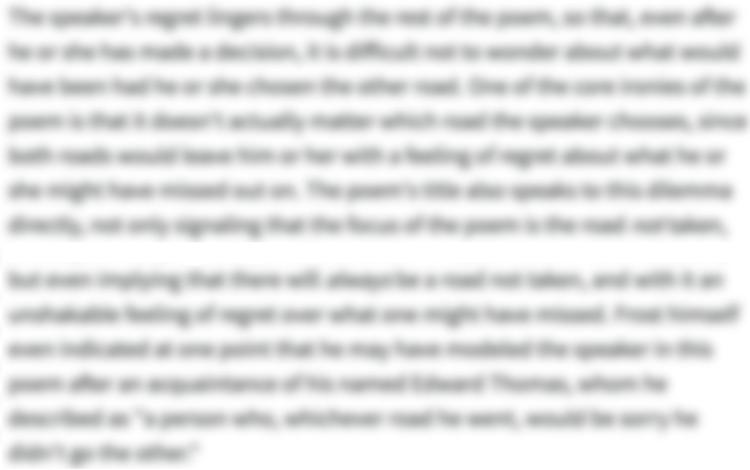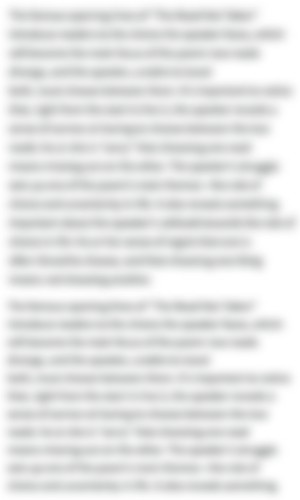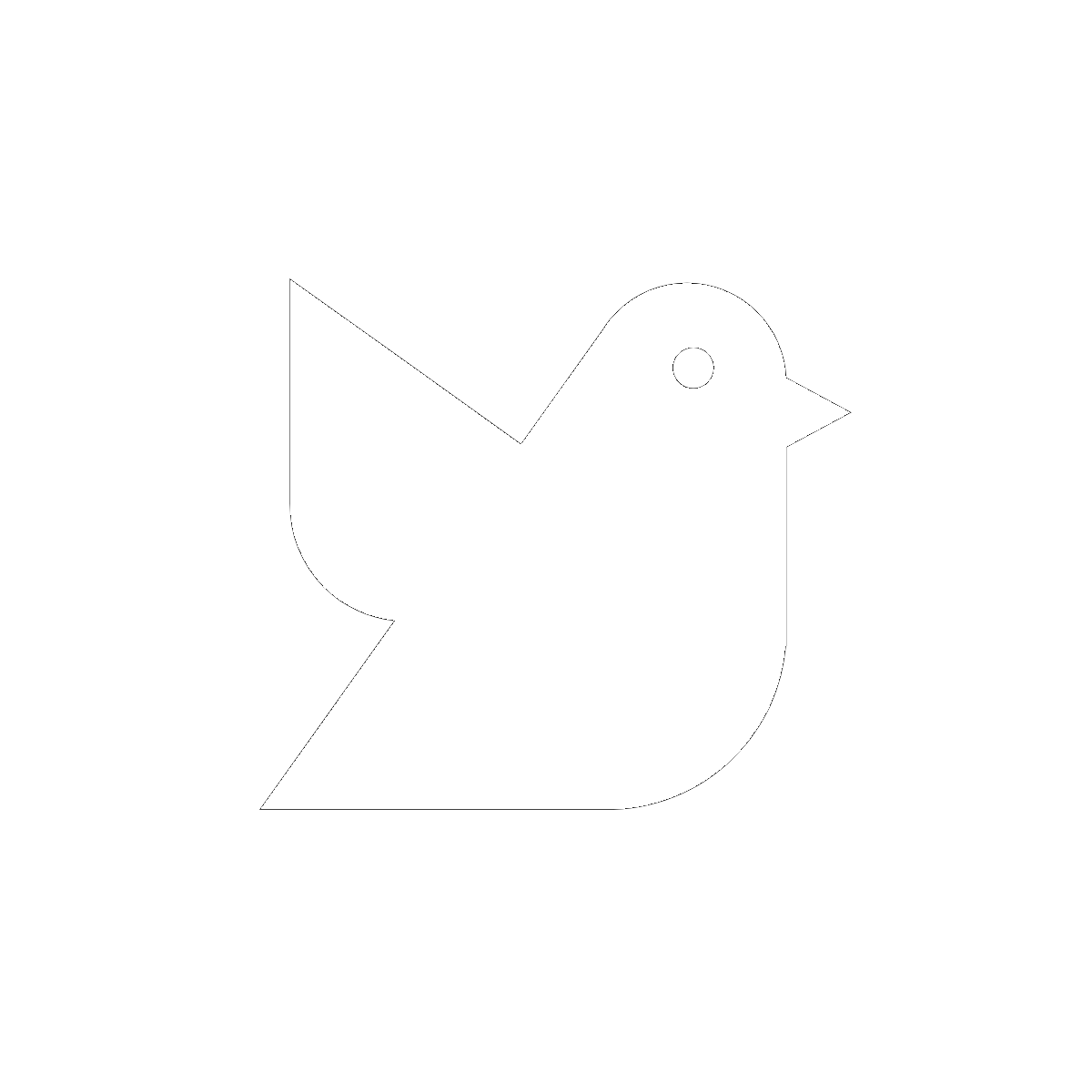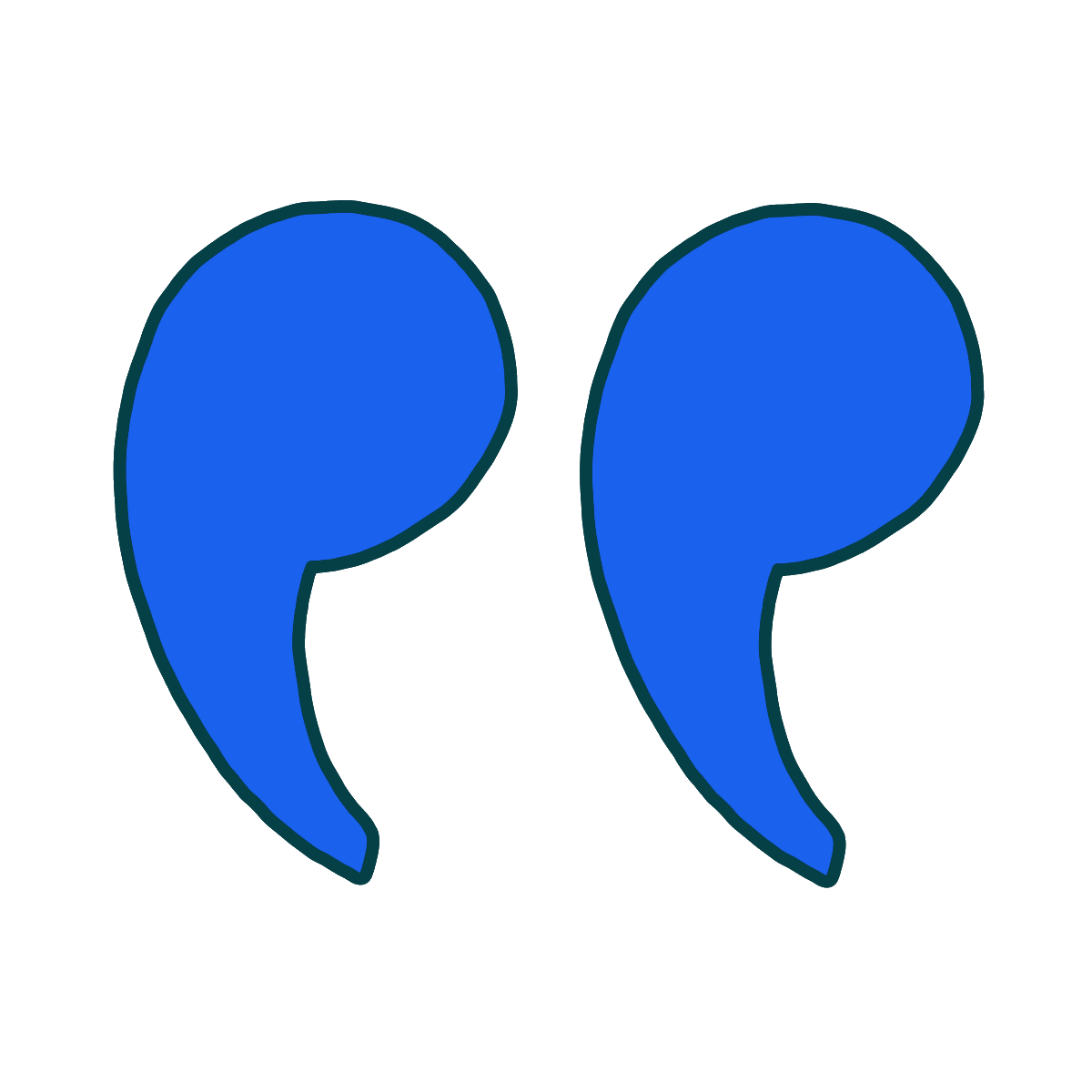The Full Text of “Dreams”
1Hold fast to dreams
2For if dreams die
3Life is a broken-winged bird
4That cannot fly.
5Hold fast to dreams
6For when dreams go
7Life is a barren field
8Frozen with snow.
-
“Dreams” Introduction
-
"Dreams" is an early poem by American poet Langston Hughes, one of the leading figures of the 1920s arts and literary movement known as the Harlem Renaissance. Originally published in the magazine The World Tomorrow in 1923, it explores themes that would echo throughout Hughes's work: the sustaining power of dreams (especially in the face of difficult realities) and the problems that arise when dreams are thwarted or abandoned. Its two short stanzas deliver an urgent warning never to let dreams die.
-
-
“Dreams” Summary
-
The speaker urges the reader to hold on tightly to dreams, comparing the pain of life without dreams to the ordeal of an injured bird that can't get off the ground.
The speaker again urges the reader to hold on tightly to dreams, this time comparing the bleakness of life without dreams to the emptiness of a frozen winter landscape.
-
-
“Dreams” Themes
-

The Necessity of Dreams
“Dreams” is one of Langston Hughes’s many poems about the power and necessity of dreams for both individuals and communities. In eight short lines, the poem’s speaker warns the reader that abandoning dreams (which might mean hopes, aspirations, fantasies, imaginative visions, and/or illusions) robs life of its vitality and purpose. Through its metaphorical images of brokenness and barrenness, the poem depicts life without dreams as no longer worth living.
The speaker begins by advising the reader to hold on to dreams, illustrating the pain of a life without them by comparing it to an injured, earthbound bird.“[A] broken-winged bird / That cannot fly” is a suffering creature that has lost its mobility, as well as one of its defining traits (that is, the power of flight). It may also have lost its bearings, community, and means of obtaining food. The comparison thus implies that a life without dreams is painful, frustrating, deprived, and possibly unable to continue much longer. This comparison also suggests that dreams are a defining trait of humanity, something that drives and sustains people.
The speaker then repeats—in even more ominous terms—the advice to hold on to dreams, this time comparing a dreamless life to a lifeless field. Unlike an injured bird, which is alive and might recover, “a barren field / Frozen with snow” can’t sustain any life at all. This comparison indicates that giving up one’s dreams can be more than a painful crisis: it can feel like emotional or spiritual death.
The speaker never explicitly defines “dreams” in the poem, and the poem's meaning here changes slightly depending on how readers interpret the word. If readers take “dreams” to mean hopes or aspirations, then the metaphor of life as a “barren field” evokes people's inability to imagine a rewarding future (or any future, for that matter) when they lose sight of their dreams. If “dreams” means fantasies or illusions, then the metaphor suggests that life is harsh, cold, and empty when seen as it really is—that is, without the veil of “dreams” over it. By extension, the metaphor implies that the dreams people do have preserve, nourish, and enrich them, like crops from a fertile field.
Despite the speaker's call for people to cling to dreams, the shift from “if dreams die” in the first stanza to “when dreams go” in the second indicates that nothing can keep dreams alive forever; losing them is a matter of “when,” not “if.” The poem’s abrupt, sobering ending—“frozen” image, mirroring the stasis that accompanies the end of dreams and the end of life—underscores the urgency of “Hold[ing] fast to dreams” as long as possible.
Dreams are a subject that Hughes returned to over and over in his poetry. He often linked them with the experiences of Black Americans and/or the adjective “deferred” (postponed, delayed). But “Dreams” is a broad, stark statement: an unqualified warning to hold on to dreams in general, whether or not they ever come true. Their loss brings pain, incapacity, and emptiness; therefore, the poem argues, they are a vital source of pleasure, strength, and sustenance.
- See where this theme is active in the poem.
-
-
Line-by-Line Explanation & Analysis of “Dreams”
-
Lines 1-2
Hold fast to dreams
For if dreams dieLines 1-2 of "Dreams" consist of an imperative (instruction or command) followed by the beginning of an explanation. In other words, the poem's speaker is offering and justifying a piece of advice.
Who is the speaker, and whom are they addressing? The speaker's authoritative tone suggests that their experience has provided some insight on the subject of dreams. The lack of other identifying context (either in the title or the poem) suggests that the speaker is more or less equivalent to the poet and that their advice is addressed to readers in general.
What kind of "dreams" does line 1 refer to? The word could literally mean visions experienced during sleep. More broadly, it could mean hopes, aspirations, imaginative escapes from reality (as in daydreams), artistic visions, fantasies, illusions, or some combination of these. The context points toward the second category of dreams, since it makes more sense to remain attached to meaningful hopes than to semi-random nocturnal visions!
The word "fast" (line 1) contains a potential double meaning. In context, it primarily means tightly or securely. "Hold fast" is another way of saying, "Hold on tight." But another definition of "fast"—quickly—may be relevant, too. Line 2 indicates that dreams can "die," so the speaker may be warning the reader to grab hold of dreams both securely and quickly, before they slip away (or before they're taken away by some outside force). How this advice translates to real life is open to interpretation, but the general sense is clear: the speaker wants readers to take their dreams as seriously as possible, as soon as possible.
The sound of these lines underscores their urgency. They're terse and full of punchy monosyllabic words. The poem's basic meter is iambic dimeter (meaning each line has two iambs, poetic feet with an unstressed-stressed beat pattern). As such, lines 1-2 contain at least four strong stresses:
Hold fast to dreams
For if dreams dieHowever, Hughes often employed metrical substitutions and variations. (As a poet who helped incorporate jazz techniques into modern poetry, he liked to keep his verse rhythms a little unpredictable.) Lines 1-2 could also be scanned as follows:
Hold fast to dreams
For if dreams die
In other words, Hughes may want the reader to hear spondees (stressed syllable + stressed syllable) rather than iambs (unstressed + stressed) at the beginning of the first line and the end of the second.
Regardless of the exact pattern, these strongly stressed monosyllables make the lines sound emphatic. Alliteration reinforces the emphasis as well: "dreams"/"dreams"/"die."
-
Lines 3-4
Life is a broken-winged bird
That cannot fly.

Unlock all 379 words of this analysis of Lines 3-4 of “Dreams,” and get the Line-by-Line Analysis for every poem we cover.
Plus so much more...
Get LitCharts A+ -
Lines 5-6
Hold fast to dreams
For when dreams go -
Lines 7-8
Life is a barren field
Frozen with snow.
-
-
“Dreams” Symbols
-

The Broken-Winged Bird
Birds and bird flight are common symbols of freedom, escape, possibility, joy, and success. Idioms like "free as a bird," "flew the coop," "spread your wings," and "soaring triumph" draw on this symbolism, which associates birds' liftoff from earth with humans' departure from a confined or mundane state into something "higher" or better.
Likewise, the earthbound bird is a common symbol of restricted freedom. The idiom "clip [someone]'s wings," based on the practice of cutting birds' wing-feathers to prevent them from flying, means to curtail someone's freedom or potential. In his poem "Sympathy," Paul Laurence Dunbar's image of the "caged bird" symbolizes the individual trapped by society's conventions, particularly the Black individual trapped by American racism. (This poem was a likely influence on "Dreams": see the Context section.)
Hughes's version of this symbol, the "broken-winged bird" in "Dreams," emphasizes incapacity, vulnerability, and damaged potential. The physically wounded creature evokes the psychological wound of living without dreams. The fact that the bird "cannot fly" implies that life without dreams can no longer fulfill its potential or take off toward success.
- See where this symbol appears in the poem.
-

The Frozen Field
Fields are symbolically associated with growth, cultivation, sustenance, and possibility (as in an "open field" of choices or opportunities). Idioms such as "my [professional] field," "tough row to hoe," and "harvest the fruits of your labor" link fields with a life's work, successes, and failures.
The field in "Dreams" is both "barren" and "frozen." It represents a life without any potential for growth—a life that might as well be over, if it isn't already. (Fields can no longer be cultivated in winter, and barren fields can't be cultivated at all. Winter itself is traditionally associated with age and decline, just as spring is associated with youth and fertility.)
A field that contains nothing but snow is likely to be relatively flat and smooth. The visual flatness of the image evokes the flatness, or dullness, of a life without dreams. Similarly, the frozenness of the field suggests that life without dreams is numbing, bitter, and harsh.
- See where this symbol appears in the poem.
-
-
“Dreams” Poetic Devices & Figurative Language
-
Metaphor
"Dreams" revolves around two major metaphors. The speaker compares life after the loss of dreams to "a broken-winged bird / That cannot fly" and "a barren field / Frozen with snow." The first metaphor is bleak and the second even more so. The first implies that life without dreams is painful, lonely, dangerous, and so on. The second implies that it's sterile, numbing, and empty—a deathlike state.
As discussed in the Symbols section of this guide, these metaphors are enriched by symbolic associations that don't explicitly feature in the poem. For example, flying birds are often associated with freedom and grounded birds with the loss of freedom. Although the theme of freedom isn't explicit in "Dreams," this association broadens the poem's range of possible meanings.
Subtler metaphorical language appears in the phrase "Hold fast" and in the verbs "die" and "go." This phrasing implicitly compares dreams to elusive living things that will soon die (naturally or due to some outside force) or leave (because they've escaped or because they've been snatched away) unless the dreamer clings tightly to them. In other words, dreams are like forms of endangered life, and life without them is endangered in turn.
- See where this poetic device appears in the poem.
-
Alliteration


Unlock all 192 words of this analysis of Alliteration in “Dreams,” and get the poetic device analyses for every poem we cover.
Plus so much more...
Get LitCharts A+ -
Assonance
-
Repetition
-
Enjambment
-
-
“Dreams” Vocabulary
Select any word below to get its definition in the context of the poem. The words are listed in the order in which they appear in the poem.
- Fast
- Broken-winged
- Barren
Fast-
"Fast" can mean tightly/securely, or it can mean quickly. "Dreams" uses the word primarily in the first sense, urging the reader to hold on tightly to dreams. But it also contains a hint of the second meaning, as in, "Grab hold of dreams quickly, before it's too late."
- See where this vocabulary word appears in the poem.
-
Form, Meter, & Rhyme Scheme of “Dreams”
-
Form
"Dreams" consists of two quatrains (four-line stanzas). The combination of short quatrains and ABCB rhyme scheme are reminiscent of the ballad form. Many traditional ballads employ repetitive structures and themes of sorrow or loss, as "Dreams" does. But "Dreams" doesn't follow traditional ballad meter, and it contains so many rhythmic variations that it barely follows any meter. In keeping with its theme of brokenness, it might be described as a "broken" ballad, with the repeated line "Hold fast to dreams" serving as a kind of refrain. Ultimately, however, it doesn't adhere to any standard (named) form.
-
Meter
The meter of "Dreams" is closest to iambic dimeter, meaning there are two iambs (feet with an unstressed-stressed syllable pattern) per line. A perfect line of iambic dimeter thus looks like this:
unstressed stressed | unstressed stressed
However, the poem contains so many metrical variations that it never follows this meter, or any meter, to the letter. It's possible to read Lines 1, 2, 5, and 6 as perfect iambic dimeter, but it's also possible to read any or all of these lines as containing variations (most often the substitution of a spondee—a pair of stressed syllables—for one of the iambs in the line).
Here is one possible way to scan lines 1-2, for example:
Hold fast | to dreams
For if | dreams dieBut this can also be read as having spondees thrown in:
Hold fast | to dreams
For if | dreams dieOther lines are even less regular. Take lines 3 and 7-8, which can be read as follows:
Life is a | broken- | winged bird
[...]Life is | a bar- | ren field
Frozen | with snow.These lines start with trochees (stressed-unstressed) or dactyls (stressed-unstressed-unstressed, as in "Life is a"). Line 3 is very irregular and could be broken up in a few ways, perhaps evoking the stumbling of this "broken-winged bird." Lines 7-8 eventually fall back into iambs, but again start with a forceful stress.
So what's the case for "Dreams" being an iambic dimeter poem? Lines 1, 2, 4, 5, and 6 all contain four syllables with definite stresses on the second and fourth syllables. Regardless of all the other variations, this is enough to establish an approximate pattern of iambic dimeter. However, it could also be argued that "Dreams" never really settles into a consistent meter at all.
There are many ways to read these metrical effects into the poem's themes. An "unsettled" meter is appropriate for an unsettling poem; a "broken" meter is appropriate to a poem that deals with brokenness; a "slippery" meter is appropriate to a poem about dreams slipping away.
-
Rhyme Scheme
The second line of each quatrain rhymes with the fourth. "Dreams" thus follows the rhyme scheme:
ABCB
Technically speaking, line 5 repeats the "A" rhyme from line 1 ("dreams"), even as other rhyme sounds are different; readers might thus think of stanza 2 as:
ADED
However one maps it out, the important thing here is that the pattern of rhyme repeats in each stanza. The rhymes themselves are also exact: "die"/"fly", "snow"/"go." Rhyme helps make verse memorable (and memorizable), so it's a natural device for a poem in which the speaker is advising the reader—and presumably hoping that advice will stick.
End rhyme (especially perfect end rhyme) can also lend verse a sense of completeness, as though one line is finishing what another started. This effect fits the context of the poem, which describes a process coming to a full and inevitable stop: when dreams go, the best of life is over.
-
-
“Dreams” Speaker
-
The speaker of "Dreams" is anonymous and addresses a general audience. It's fair to assume that this speaker closely approximates Langston Hughes himself, since the poem contains no ironies or other clues to suggest that the speaker's view of dreams differs significantly from the poet's.
The poem does offer one major clue about the speaker: it's a poem of advice, meaning that the speaker claims some authority on the subject of dreams. It's reasonable to infer that this speaker has some experience with dreams and/or the loss of dreams. The poem itself reveals nothing about the nature of this experience, whether it might be firsthand or secondhand, etc. However, because Hughes published many other poems on the subject of dreams (see Context), it's useful to read this speaker in the context of the poet's biography.
Hughes wrote "Dreams" as a Black American in his early 20s. Assuming it expresses his personal sentiments, it's a notably world-weary statement for a young author to make. Though it's delivered as universal life advice, it may also, like his subsequent poems about dreams (such as "Dream Variations" and "Harlem"), reflect his experience of a country that's historically been hostile to the dreams of its Black population.
-
-
“Dreams” Setting
-
"Dreams" has no specific setting. Its only reference to place, "a barren field / Frozen with snow," is metaphorical and does not indicate that the poem is set in winter or in the countryside.
The lack of a particular setting underscores that this is a poem about "Life" in general, delivered by an anonymous speaker to a non-specific audience (or perhaps by the poet to readers at large).
-
-
Literary and Historical Context of “Dreams”
Literary Context
Langston Hughes was a leading writer of the Harlem Renaissance, an early-20th-century artistic, intellectual, and social movement centered in the largely Black Harlem neighborhood of New York City. Hughes published "Dreams" in 1923, near the start of his career, as the movement was beginning to flourish. In addition, the Harlem Renaissance overlapped with and contributed to the literary Modernist movement, which began in the 1910s, gained momentum after World War I, and introduced a wave of poetic experimentation.
Hughes's poetry, including "Dreams," both influenced and was influenced by these movements, as well as by the broader social currents of the period. For example, the Harlem Renaissance brought an explosion of musical innovation, particularly in jazz and the blues. Hughes strove to adapt the techniques of these genres into his poetry. His first published collection was titled The Weary Blues and contains, in addition to the famous title piece, such poems as "Jazzonia," "The Cat and the Saxophone," and "Harlem Nightclub." (It also contains an entire section called "Dream Variations": proof that dreams were a central concern of his poetry from the start.)
Hughes helped establish the "jazz poetry," through effects ranging from playful typography to radical variations on traditional meter. Modernist poets (such as Hughes's contemporaries T. S. Eliot, E. E. Cummings, and Marianne Moore) also placed a high value on formal experimentation. The metrical idiosyncrasies of "Dreams" reflect Hughes's passion for innovative musical and verse technique.
"Dreams" is one of many dream-related poems Hughes wrote throughout his career, most notably in his 1951 collection Montage of a Dream Deferred. A famous example is "Harlem," which begins, "What happens to a dream deferred? // Does it dry up like a raisin in the sun?" and ends, "Or does it explode?" Both poems concern the fate of dreams, but whereas "Dreams" emphasizes how thwarted dreams can cause internal suffering, "Harlem" hints that they may also cause external rage or violence.
Hughes's "Dreams" may also have drawn inspiration from Paul Laurence Dunbar's classic poem "Sympathy" (1899), in which a "caged bird" symbolizes, in part, the author's plight as a Black American confined by prejudice. Maya Angelou later alluded to this poem in the title of her autobiography, I Know Why the Caged Bird Sings. Writing a generation after Dunbar, Hughes would have been familiar with "Sympathy" and may have adapted its central symbol in writing "Dreams."
Like Dunbar's work, Hughes's poetry on this theme is closely associated with the dreams and realities of Black Americans in particular, as well as the problem of the "American Dream." It profoundly influenced many marginalized writers during and after his lifetime, among them playwright Lorraine Hansberry (A Raisin in the Sun) and Dr. Martin Luther King, Jr. (some of whose speeches drew on phrases and ideas in Hughes's work).
Historical Context
Both the Harlem Renaissance and Modernism channeled the social conflicts of the age. With daring candor, Hughes and other Black artists of the Harlem Renaissance expressed the frustration, anger, and sorrow of life in a racist society. At the time “Dreams” was published, the southern U.S. was still segregated, the Ku Klux Klan was resurgent, and the Civil Rights movement was decades away. (Also far on the horizon was the modern LGBTQ rights movement, and many scholars believe Hughes was a gay man who chose not to risk openness about his sexuality.)
Though "Dreams" doesn't explicitly address injustice or oppression, it's part of a larger body of work, including Hughes's other dream poems, that confronts these themes repeatedly. Its attitude toward dreams reflects the experience of a writer whose country often belittled, blocked, or crushed the dreams of people like himself.
During the 1920s, Modernist poetry was also wrestling with the catastrophes of the previous decade, especially World War I and the 1918 flu pandemic. T. S. Eliot famously captured this traumatized cultural landscape in his Modernist poem The Waste Land, published in 1922. Though "Dreams" isn't necessarily a response to The Waste Land, its vision of "a barren field / Frozen with snow"—a wasteland of lost dreams—has something in common with Eliot's metaphor for cultural desolation.
-
More “Dreams” Resources
-
External Resources
-
The Poem Out Loud — Watch Dr. Christopher Emdin of Columbia University read "Dreams" aloud and explain what the poem means to him as an educator.
-
"Dream Variations" at the Academy of American Poets — Read another famous Hughes poem about dreams, one that engages with racial divisions and describes the speaker's own liberating dream.
-
Jazz Poetry — A brief guide to the innovative style that Hughes and other Harlem Renaissance writers developed in their work.
-
"How Langston Hughes’s Dreams Inspired MLK’s" — Read about connections between Langston Hughes's poetry and Martin Luther King, Jr.'s oratory, including his 1963 "I Have a Dream" speech.
-
The Harlem Renaissance — Learn more about the cultural and artistic movement Hughes helped pioneer.
-
-
LitCharts on Other Poems by Langston Hughes
-








